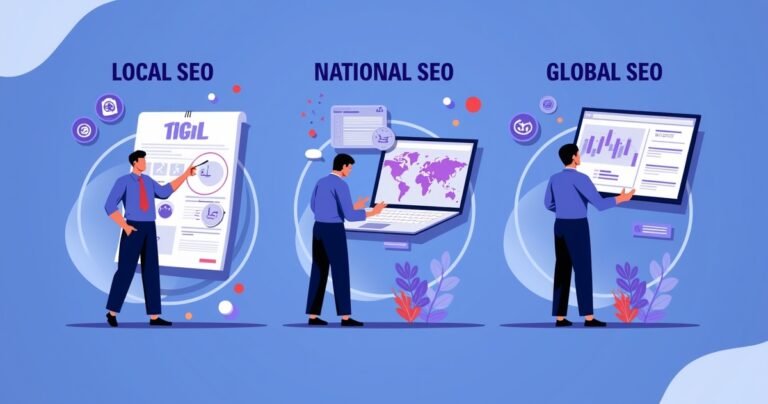In the ever-evolving world of digital marketing, understanding the intricacies of search engine optimization (SEO) is crucial for any business aiming to enhance its online presence. Among the myriad of SEO strategies, backlinks stand out as a pivotal element. But what exactly are backlinks, and why are they so important? This comprehensive guide will delve into the significance of backlinks in SEO, exploring their types, importance, and the best practices for building a robust backlink profile. Whether you’re a seasoned marketer or a beginner, this guide will equip you with the knowledge to leverage backlinks effectively and boost your website’s rankings.
What Are Backlinks in SEO?
Backlinks, also known as inbound or incoming links, are links from one website to another. They serve as a vote of confidence from one site to another, signaling to search engines that the content is valuable and credible. When a reputable site links to your page, it can significantly enhance your site’s authority and visibility.
- Backlinks are crucial for SEO as they help search engines determine the relevance and authority of your content.
- They act as endorsements, indicating to search engines that your content is trustworthy.
- The more quality backlinks you have, the higher your site can rank in search engine results pages (SERPs).
Types of Backlinks
Not all backlinks are created equal. Understanding the different types can help you prioritize your link-building efforts.
- Natural Backlinks : These occur organically when other sites link to your content without any action on your part.
- Manual Backlinks : These are acquired through deliberate link-building strategies, such as guest blogging or outreach.
- Self-Created Backlinks : These are created by adding links in forums, blog comments, or online directories. However, they are often considered low-quality.
| Type of Backlink | Description |
| Natural Backlinks | Occur organically without any action from the site owner. |
| Manual Backlinks | Acquired through deliberate strategies like guest blogging. |
| Self-Created Backlinks | Created by adding links in forums or comments, often considered low-quality. |
The Role of Backlinks in Search Engine Algorithms
Backlinks play a crucial role in search engine algorithms, acting as one of the primary factors in determining a site’s ranking.
- Search engines use backlinks to assess the credibility and authority of a website.
- A site with numerous high-quality backlinks is likely to rank higher in search results.
- Backlinks help search engines understand the context and relevance of your content.
The Importance of Quality Backlinks
Domain Authority and Page Authority
Domain Authority (DA) and Page Authority (PA) are metrics developed by Moz to predict how well a website will rank on search engines. High DA and PA scores indicate a strong backlink profile.
- Quality backlinks from high DA sites can significantly boost your site’s authority.
- A diverse backlink profile with links from various authoritative sites is ideal.
- Focus on acquiring backlinks from sites with high DA and PA for maximum impact.
Relevance and Contextual Links
Relevance is key when it comes to backlinks. Links from sites within your niche or industry are more valuable than those from unrelated sites.
- Contextual links, or links within the body of content, are more effective than those in footers or sidebars.
- Ensure that the linking site is relevant to your content for better SEO results.
- Search engines prioritize links that provide context and relevance to the linked content.
Natural Link Profile
A natural link profile is diverse and includes a mix of different types of backlinks. It appears organic and not manipulated.
- Avoid acquiring too many links too quickly, as this can appear unnatural to search engines.
- A healthy link profile includes a variety of link types and sources.
- Focus on quality over quantity to maintain a natural link profile.
Strategies for Building Valuable Backlinks
Creating High-Quality Content
Content is king in the world of SEO. High-quality, valuable content naturally attracts backlinks.
- Create informative, engaging, and original content that others want to link to.
- Use visuals, infographics, and data to enhance your content’s appeal.
- Regularly update your content to keep it relevant and valuable.
Guest Posting and Outreach
Guest posting involves writing articles for other websites in exchange for a backlink to your site.
- Identify reputable sites within your niche for guest posting opportunities.
- Craft high-quality, relevant content that provides value to the host site.
- Build relationships with site owners for future collaboration and link-building opportunities.
Broken Link Building
Broken link building involves finding broken links on other websites and suggesting your content as a replacement.
- Use tools to identify broken links on relevant sites within your industry.
- Reach out to site owners with a polite request to replace the broken link with your content.
- Ensure your content is a suitable replacement and provides value to the site’s audience.
Leveraging Business Relationships
Utilize your existing business relationships to acquire backlinks.
- Collaborate with partners, suppliers, or clients for mutual link-building opportunities.
- Offer to write testimonials or case studies in exchange for a backlink.
- Participate in industry events or webinars to gain exposure and potential backlinks.
Analyzing and Monitoring Your Backlink Profile
Tools for Backlink Analysis
Several tools can help you analyze and monitor your backlink profile, ensuring it remains healthy and effective.
- Use tools like Ahrefs, Moz, or SEMrush to track your backlinks and assess their quality.
- Regularly review your backlink profile to identify new opportunities and potential issues.
- Analyze competitor backlinks to discover new link-building strategies.
Identifying Toxic Backlinks
Toxic backlinks can harm your site’s SEO performance. Identifying and addressing them is crucial.
- Use backlink analysis tools to identify potentially harmful links.
- Look for links from spammy or low-quality sites that could negatively impact your SEO.
- Regularly audit your backlink profile to ensure it remains healthy.
Disavow Process for Harmful Links
The disavow process involves telling search engines to ignore certain backlinks to your site.
- Use Google’s Disavow Tool to submit a list of harmful links you want to disavow.
- Only disavow links that are genuinely harmful and cannot be removed manually.
- Regularly review and update your disavow file to maintain a healthy backlink profile.
Link Building Best Practices
White Hat vs. Black Hat Techniques
Understanding the difference between white hat and black hat techniques is crucial for ethical link building.
- White hat techniques focus on creating valuable content and building genuine relationships.
- Black hat techniques involve manipulative practices that violate search engine guidelines.
- Always prioritize ethical, white hat strategies for sustainable SEO success.
Anchor Text Optimization
Anchor text is the clickable text in a hyperlink. Optimizing it is essential for effective link building.
- Use descriptive, relevant anchor text that accurately reflects the linked content.
- Avoid over-optimizing anchor text with exact match keywords, as this can appear spammy.
- Diversify your anchor text to maintain a natural link profile.
Internal Linking Strategy
Internal linking involves linking to other pages within your own website. It’s an important aspect of SEO.
- Use internal links to guide users to related content and improve site navigation.
- Ensure internal links are relevant and provide value to the reader.
- Regularly review and update internal links to maintain a cohesive site structure.
The Impact of Backlinks on SEO Performance
Improved Search Engine Rankings
Backlinks are a key factor in improving search engine rankings.
- High-quality backlinks signal to search engines that your content is valuable and authoritative.
- A strong backlink profile can lead to higher rankings in search results.
- Focus on acquiring quality backlinks to boost your site’s visibility.
Increased Organic Traffic
Backlinks can drive organic traffic to your site by increasing its visibility in search results.
- Quality backlinks from reputable sites can attract more visitors to your site.
- Increased traffic can lead to higher engagement and conversions.
- Monitor your traffic sources to identify the impact of backlinks on your site’s performance.
Enhanced Online Visibility
A strong backlink profile enhances your site’s online visibility and credibility.
- Backlinks from authoritative sites can increase your brand’s exposure and reach.
- Enhanced visibility can lead to more opportunities for collaboration and growth.
- Focus on building a diverse and high-quality backlink profile for maximum impact.
Common Backlink Mistakes to Avoid
Purchasing Links
Buying links is a black hat technique that can harm your site’s SEO.
- Purchased links often come from low-quality or spammy sites.
- Search engines can penalize sites that engage in link buying.
- Focus on ethical, white hat link-building strategies for sustainable success.
Over-Optimized Anchor Text
Over-optimizing anchor text can make your backlink profile appear unnatural.
- Avoid using exact match keywords excessively in your anchor text.
- Diversify your anchor text to maintain a natural and balanced profile.
- Monitor your anchor text distribution to ensure it remains varied and relevant.
Ignoring Relevance for Quantity
Prioritizing quantity over quality can harm your backlink profile.
- Focus on acquiring relevant, high-quality backlinks from authoritative sites.
- Avoid building links from unrelated or low-quality sites.
- A diverse and relevant backlink profile is more valuable than a large number of low-quality links.
Future of Backlinks in SEO
Evolving Search Engine Algorithms
Search engine algorithms are constantly evolving, impacting the role of backlinks in SEO.
- Stay informed about algorithm updates to adapt your link-building strategies.
- Focus on creating valuable content that naturally attracts backlinks.
- Monitor industry trends to stay ahead of changes in search engine algorithms.
The Rise of No-Follow Links
No-follow links are becoming more prevalent in the SEO landscape.
- No-follow links do not pass authority but can still drive traffic and brand exposure.
- Focus on acquiring a mix of do-follow and no-follow links for a balanced profile.
- No-follow links can still provide value by increasing visibility and traffic.
Quality Over Quantity Trend
The trend towards quality over quantity in link building is gaining momentum.
- Prioritize acquiring high-quality, relevant backlinks over a large number of low-quality links.
- Focus on building genuine relationships and creating valuable content.
- A quality-focused approach to link building is more sustainable and effective.
FAQs
What is an example of a backlink in SEO?
A backlink in SEO is a link from one website to another. For example, if a popular blog links to your website in one of its articles, that link is considered a backlink. Backlinks are important for SEO because they signal to search engines that your content is valuable and credible.
How do backlinks improve SEO performance?
Backlinks improve SEO performance by enhancing a site’s authority and visibility. When reputable sites link to your content, it signals to search engines that your site is trustworthy and relevant. This can lead to higher rankings in search engine results pages, driving more organic traffic to your site.
What makes a good backlink for SEO purposes?
A good backlink for SEO purposes is one that comes from a reputable, authoritative site within your niche. It should be relevant to your content and provide value to the reader. High-quality backlinks can significantly boost your site’s authority and improve its search engine rankings.
Are there any disadvantages to backlinking in SEO?
While backlinks are generally beneficial for SEO, there can be disadvantages if not managed properly. Low-quality or spammy backlinks can harm your site’s reputation and lead to penalties from search engines. It’s important to focus on acquiring high-quality, relevant backlinks to avoid potential issues.
How can I get backlinks from high-authority sites for SEO?
To get backlinks from high-authority sites, focus on creating valuable, high-quality content that others want to link to. Engage in guest posting, outreach, and building relationships with industry influencers. Providing unique insights or data can also attract backlinks from authoritative sites.
What is the difference between dofollow and nofollow backlinks in SEO?
Dofollow backlinks pass authority from the linking site to the linked site, positively impacting SEO. Nofollow backlinks, on the other hand, do not pass authority but can still drive traffic and increase visibility. Both types of links can be valuable, but dofollow links are generally more beneficial for SEO.
How many backlinks do I need for effective SEO?
The number of backlinks needed for effective SEO varies depending on the competition and niche. Focus on acquiring high-quality, relevant backlinks rather than a specific number. A diverse and natural backlink profile is more important than sheer quantity.
Can social media links count as backlinks for SEO?
Social media links are typically nofollow, meaning they do not pass authority for SEO purposes. However, they can still drive traffic and increase brand visibility. While they may not directly impact SEO, social media links can contribute to a comprehensive online presence.






